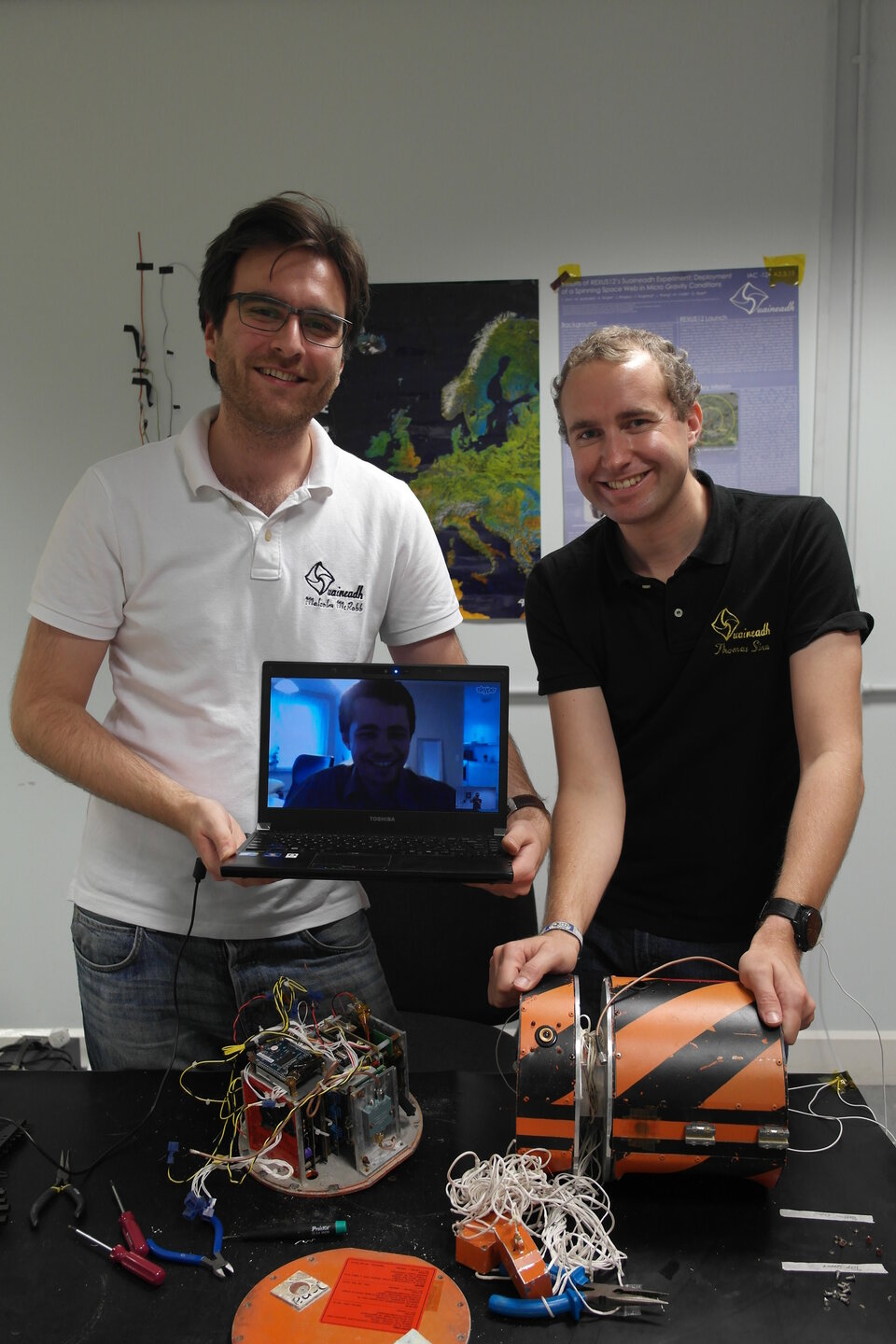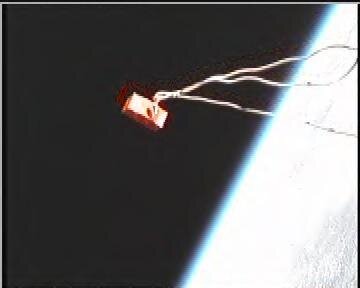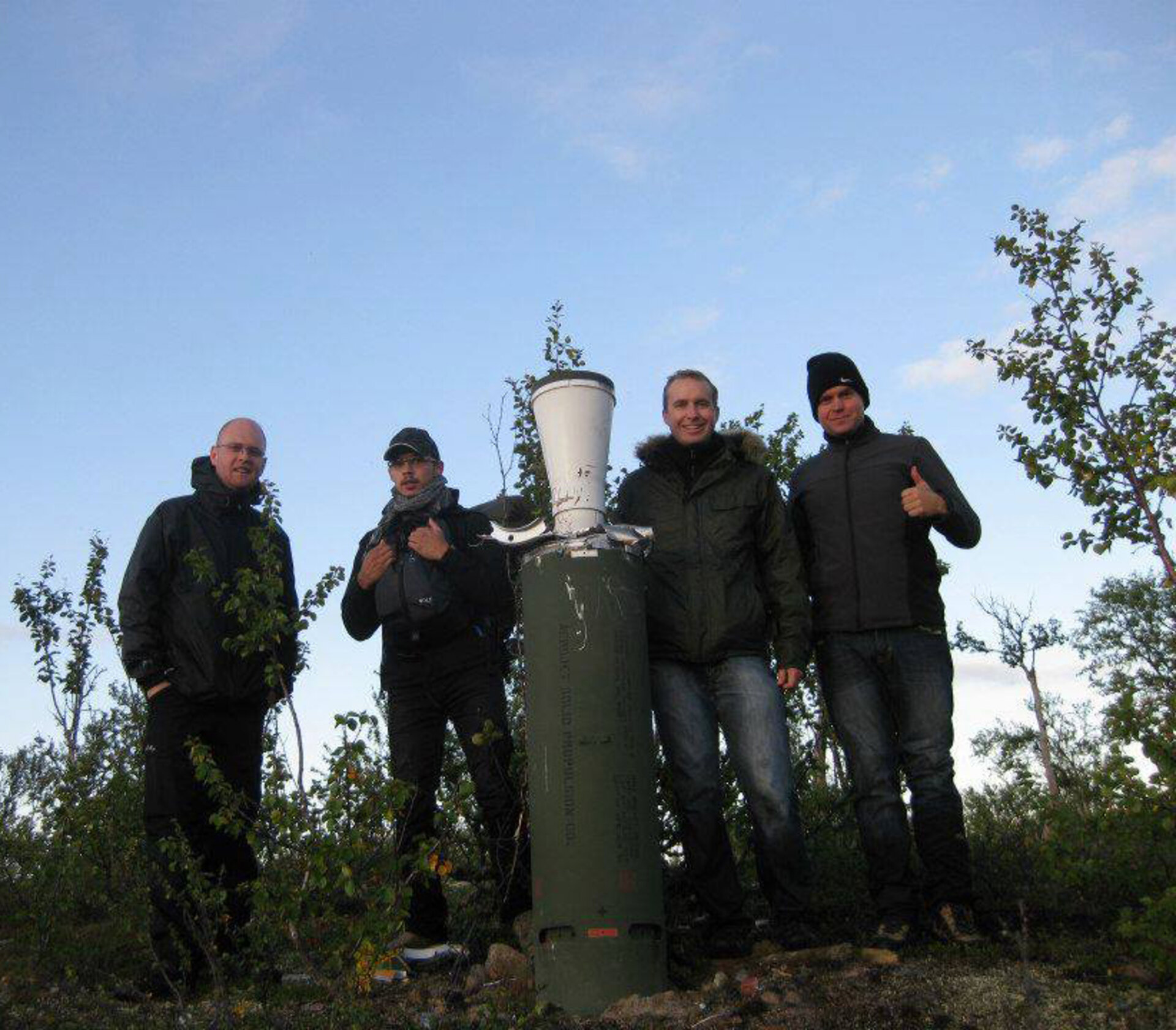The experiment that came in from the cold
A lost student experiment has been found in the arctic circle by Swedish reindeer hunters. The return of Suaineadh, which tested a deployable structure in space, means that thousands of images and reams of data thought lost can now be analysed to show the experiment’s performance.
From disappointment, now comes success. Suaineadh’s purpose was to unfold a web of material in milligravity conditions. If successful, such a structure could form the base upon which to build telescopes, telecommunications antennas or solar panels that are too large to fit inside a rocket’s payload fairing. The name, Suaineadh, means ‘twisting’ in Scots Gaelic.
It was launched on the REXUS 12 sounding rocket from SSC Esrange Space Center facility near Kiruna on 19 March 2012. The launch took place in the afternoon and initially everything went well. The 5.6-metre rocket climbed above 85 kilometres into the sky and the team waited for the first data to be received via radio. They waited, and they waited.
The experiment canister was about the size of a rucksack and was painted with orange and black stripes to make it easily visible. It contained the folded web and was ejected just before the rocket reached its top altitude. Set spinning, the centrifugal force pulled out the webwork. Four cameras, one pointing at each corner of the web, would record the progress in pictures. Meanwhile, five accelerometers would record the forces acting on the experiment so that these could be correlated with the deployment’s progress.
The data would be radioed to the rocket, which would relay it to the ground station. Yet, despite contact with the rocket, no data packets from Suaineadh were received. After 400 seconds, the rockets stopped communicating altogether. Clearly something had gone badly wrong.
The experiment had been put together by science and engineering students from the Universities of Strathclyde and Glasgow, Scotland, and Stockholm’s Royal Institute of Technology, Sweden. Thomas Sinn, Project Manager for the experiment at the University of Strathclyde, said “It was disappointing. We had all put a huge amount of work into the project.”

A search began. It took two hours to find the rocket which had plunged to Earth because of a parachute malfunction. Suaineadh was nowhere to be found. A radio beacon that should have guided the search had clearly failed to switch on.
Although disappointing, the team had a backup. The experiment’s data should have been beamed to the rocket and recorded. However, upon examining the rocket’s memory, they found only twenty images. It showed that the web began to deploy but that very soon afterwards, either the rocket or the experiment began tumbling out of control and this broke the radio connection between the two. It was a disaster.
If they couldn’t find the experiment to look at its memory, everything would be lost. Time was running out for the team, as their stay at Kiruna was coming to an end.
Back home, they began planning for a rescue operation. Using money left from the experiment’s budget, and a grant from ESA’s Education Office they returned to the Swedish arctic circle in August.
From the rocket’s trajectory, they calculated that the experiment would have fallen in a vast, uninhabited woodland area about 60 kilometres away from the launch site. The area is covered in snow during the winter, but in August, the height of summer had turned the place into a swamp. To reach the site, the team had to hike the last 15 kilometres through the wilderness.
“We saw a little too much nature,” jokes Sinn about the conditions they encountered on the trip. After just a day, they found the rocket’s discarded motor unit. This was an encouraging sign. “We began to joke about what we would do with all the free days after we found the experiment.”

The jokes proved hubristic. After ten days, they had till found nothing and their time had run out. They returned home empty handed for the second time. This time, it seemed final. “After the rocket launch in March we had the hope that we could go back to Sweden and find the experiment. Now we had nothing but the 20 pictures from the rocket memory,” says Sinn.
So they wrote their final reports based on the data they had, and moved to new projects. A year passed. Then in September 2013, an email arrived with a photo attached. It showed the orange and black striped experiment, sitting on the desk of the Esrange safety officer.
“I couldn’t believe it. It fell from nearly 90 kilometres without a parachute and there was just one small dent on the side,” says Sinn.
It was shipped to Glasgow where the memory cards were extracted and sent to a specialist data retrieval company. Now the team have 3700 pictures and all the accelerometer data from the full mission. But how was the experiment finally found?
After all the bad luck, a single piece of good fortune turned the situation on its head.
Suaineadh was discovered by reindeer hunters from Sweden’s indigenous Sami population. The people had been stalking the herds that roamed freely across the area, and stumbled across the experiment. They returned it because of stickers that the team had applied at the last minute saying ‘if found, please return to Esrange.’
“It was a long time in the making but it now has a happy ending. It has been an amazing experience,” says Sinn.
The team are now analysing the data, preparing the results for publication.
Notes for editors
The REXUS/BEXUS programme is realised under a bilateral Agency Agreement between the German Aerospace Center (DLR) and the Swedish National Space Board (SNSB). The Swedish share of the payload has been made available to students from other European countries through a collaboration with the European Space Agency (ESA). EuroLaunch, a cooperation between the Esrange Space Center of SSC and the Mobile Rocket Base (MORABA) of DLR, is responsible for the campaign management and operations of the launch vehicles. Experts from DLR, SSC, ZARM and ESA provide technical support to the student teams throughout the project.




